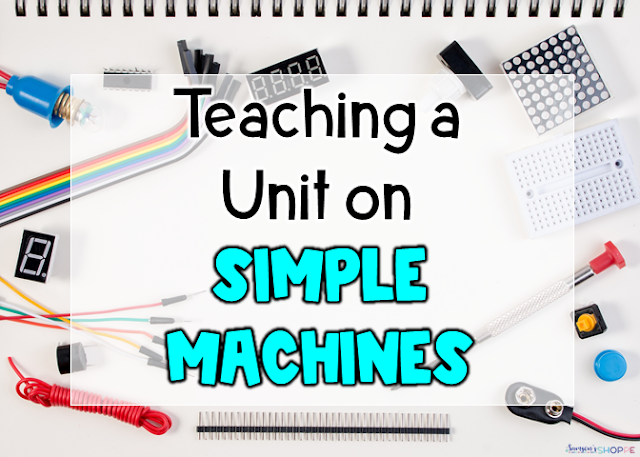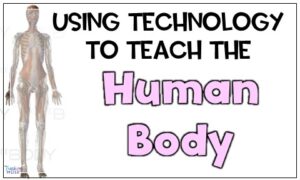Simple machines seem simple, but many students may not have access to touch, play, and envision how they work or combine to form complex machinery. To overcome this, make your simple machines unit as hands-on as possible.
According to the Next Generation Science Standards ( NGSS ), all science units should begin with phenomena. Phenomena allow students to begin to think about the topic without giving prior knowledge or information. It allows students to learn on their own. Here are some ideas I like to use to begin a unit on simple machines:
Now students have an idea about simple machines; it’s time to connect their thinking—first, give students some information about simple machines through vocabulary and content area readings.
Simple machine vocabulary terms
- machine
- simple machine
- complex machine
- resistance
- effort
- fulcrum
- work
- inclined plane
- wedge
- screw
- lever
- wheel and axle
- pulley
Simple machines science texts
This information clues students into what they are learning about. Students will learn about what each simple machine is, how it works, real-life examples of each, and how they can solve real-life problems.
To internalize their understanding of the topic, I like to incorporate sketch notes. Sketch notes allow students to access both sides of their brain to demonstrate their knowledge of a topic. Students fill in information about each simple machine and doodle or color to cement into the other side.
Simple machines hands-on activities
Now, it’s time for hands-on learning. I prefer to set up hands-on activities in stations and give students a day or two to rotate through. You can choose this method or one that better fits your classroom needs. Students rotate through different station activities completing the hands-on portion and questions before moving on to the next.
Inclined plane:
Determine what is easier and causes less damage to a hard-boiled egg; rolling down a ramp or being dropped from the height of the top of the ramp.
Wedge:
Analyze the structure of different paper airplanes, predict how they will fly, and then test your hypothesis.
Screw:
Wrap a piece of paper cut into the shape of a triangle around a pencil. What does it resemble? This activity will visually see how a screw is an inclined plane wrapped around a rod.
Lever:
Students will follow instructions to create their own catapult levers. Once the lever is constructed, they will test the distance a small and large marshmallow can travel.
Wheel and Axle:
Students will use a rolling pin, type of wheel and axle, to observe how it works.
Set up different pulley systems to allow students to see how they work and how they are constructed. Low budget? Simply tape one end of a string to a pencil, wrap the string around the pencil. Tie the other end around an object and practice using your pulley to lift the item up and down.
Simple machines review activities.
When reviewing information, I love to use flipbooks. For example, giving a test provides an excellent review allowing students to summarize important parts of each topic. You can easily make your own flipbook by using several pieces of paper. Layer the sheets so that they make tabs. Students will title each tab, and when they lift it, they can write in the information that summarizes the example of force or law of motion. Need something quickly? Check out a premade one here.
Assess student knowledge of this topic through different project ideas. Some projects that I have used in my classroom include:
- Create a park project: Students will use their knowledge of the inclined plane, wedge, screw, lever, wheel, and axle, and pulley to design a park that incorporates all six. Students explain how each is related to simple machines.
- STEM projects: Students integrate their inquiry learning skills along with their knowledge of simple machines to create
Teaching about simple machines can be so much fun with all the hands-on elements. I hope these ideas helped you spark engagement in your own classroom. If you are interested in the unit of premade activities, readings, and projects, click here.









